Managing screen rotation on your Galaxy phone

If your Galaxy phone will not stop rotating its screen, or, on the other hand, if it does not rotate at all, do not panic. Your device comes with screen rotation settings built right in. It is just a matter of making sure you have the correct settings in place. You can make your device's screen rotate freely with Auto rotate, or lock it in one position using either Portrait or Landscape mode.
Note: Information provided applies to devices sold in Canada. Available screens and settings may vary for smartphones sold in other countries.
There are three different icons used for changing your screen orientation: Auto rotate, Portrait, and Landscape.
- Auto rotate: Allows your device’s screen orientation to automatically adjust and rotate depending on how you are holding your device. For example, if you turn your device sideways, the screen will automatically switch to Landscape mode. The Auto rotate icon looks like a small phone surrounded by two arrows. The icon will glow blue when enabled.

- Portrait or Landscape mode: Portrait locks the screen in the upwards position, while Landscape locks the screen in the sideways position. Both icons look like a lock and are gray when enabled. When enabled, your device's screen will not rotate based on how you are holding it, however apps that are designed for a specific mode will rotate the screen as necessary.
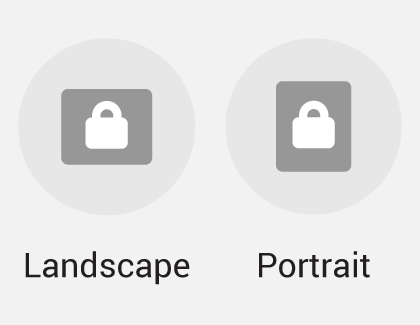
To adjust the screen rotation settings:

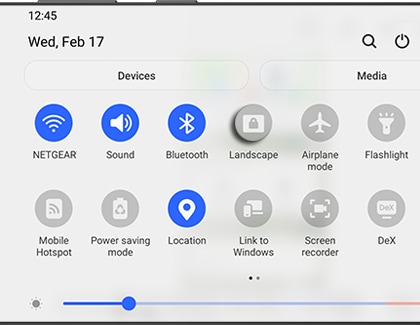
Note: Some apps will still open in Portrait or Landscape mode by default.
Does your Quick settings panel seem to be missing the Rotate icon? There may be a simple explanation.
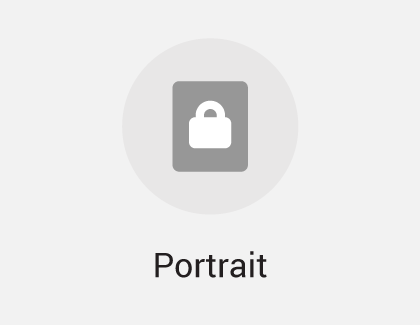
If the screen is locked in Portrait or Landscape, the screen orientation icon will be labeled as such. The Auto rotate icon will only appear if the Auto rotate feature is activated. If you see an icon that says Portrait or Landscape, you can tap it to enable Auto rotate. Or, you can just leave it alone if you would prefer to keep your device's screen orientation locked.

If you still cannot find the screen orientation icon, it is possible that you accidentally removed it from the Quick settings panel. But do not worry, it is easy to add back.
Swipe down from the top of the screen to open the Quick settings panel. Tap the Edit icon (the pencil), and then tap Edit under “Full” (on the right). Touch and hold the Auto rotate icon, and then drag it to your desired position. When you are finished, tap Done. Now the Rotate icon will be easy to reach and you can adjust your screen’s rotation settings accordingly
By default, your device's screen will not rotate when you are on the Home screen, but you can change this. Simply go to your Home screen settings to make your Home screen rotate sideways.
To check other rotation settings, open the Quick settings panel by swiping down from the top of the screen. Touch and hold the Auto rotate icon to open its settings, and then review the options for the Home screen, Lock screen, and Voice call screen. You can turn on your preferred settings by tapping the switches next to them, and then tapping Done.
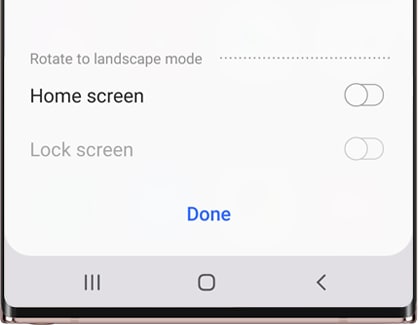
Note: This option is not available on Galaxy tablets.
Even if Auto rotate is enabled, you can temporarily lock the screen so it does not rotate. This can be helpful if you are looking at a PDF or document and want to rotate your hand or device without changing your screen orientation.
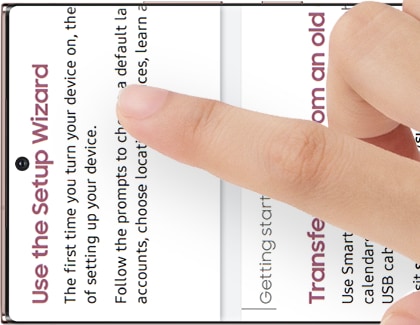
To do this, keep a finger on the screen while turning the phone or tablet. The screen will stay in its original orientation as long as you hold your finger in place. Release your finger to allow the screen to rotate.
Is this content helpful?
Thank you for your feedback!
Please answer all questions.

